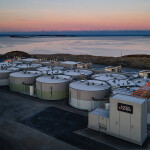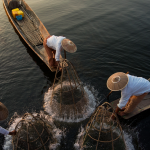A new report from the Irish Sea Fisheries Board, Bord Iascaigh Mhara (BIM), said exports and the targeting of new markets are among the most successful growth areas in Ireland’s seafood sector.
At a government conference reviewing the implementation of Ireland’s “Our Ocean Wealth” marine plan, the organization said both areas will be critical to Ireland achieving its projected targets of generating EUR 1 billion (USD 1.4 billion) in seafood sales and creating 3,000 jobs as its seafood sector moves towards increasing levels of globalization.
Worth EUR 822 million (USD 1.1 billion) to the economy, and employing about 11,000 people, Ireland’s seafood sector is showing phenomenal growth on the export market with sales up by 29 percent from EUR 378 million (USD 512.8 million) in 2010 to EUR 489 million (USD 663.3 million) in 2013.The report shows a decline in demand and prices in traditional mainland European markets due to the economic downturn, but also identifies an accelerated growth in emerging markets such as China and Hong Kong. Ireland recorded 75 percent growth in Irish seafood exports to China. While China’s growing middle class is a key driver in the demand for Irish seafood, Michael Keatinge, BIM deputy chief executive said, “broader demographics are set to significantly challenge Ireland’s ability to supply raw material to best capture our share of the global opportunity for seafood.”
With the world's population expected to reach eight billion by 2025, the resulting demand for an additional 42 million metric tons (MT) of seafood globally by 2030, will put unprecedented pressure on Ireland's seafood sector to compete effectively for its global market share. But Ireland could fully capitalize on the growing world demand for seafood by implementing the type of ambitious aquaculture initiatives proposed in the current marine plan which would see current aquaculture output increase by 78 percent.”
The report states, with quotas and natural constraints limiting the wild fish catch available to meet the global need for seafood, the bulk of the additional seafood supply will have to come from sustainable fish farming sites like those proposed by BIM along the Galway, Donegal and Mayo coastline.
The report captures important work undertaken by agencies like BIM on aquaculture proposals that could result in the production of more than 45,000 MT of additional raw material by 2017.
The report also acknowledged the importance of government continuing to work with industry to create scale within industry structures.
“We currently have 180 registered Irish seafood companies with processing facilities in Ireland. A large number of these companies are small-scale, often family-run firms with a turnover ranging from EUR 3 million (USD 4.1 million) to EUR 10 million (USD 13.6 million). By 2017, BIM aims to have helped four Irish companies generate a turnover of over EUR 50 million (USD 67.8 million). We will do so by further tackling the crunch issue of developing scale within the sector,” Keatinge said.
“Quota restriction, a fragmented processing infrastructure, a limited international foot print and no presence on the stock market are all placing significant limits on the sector's ability to reach its potential as a global seafood player. Scaling up the industry is simply vital.”





